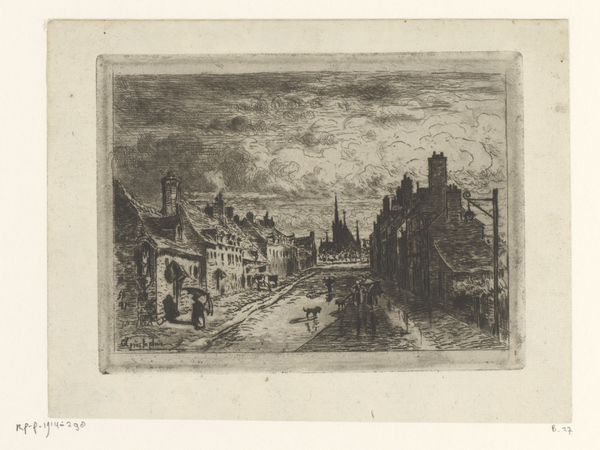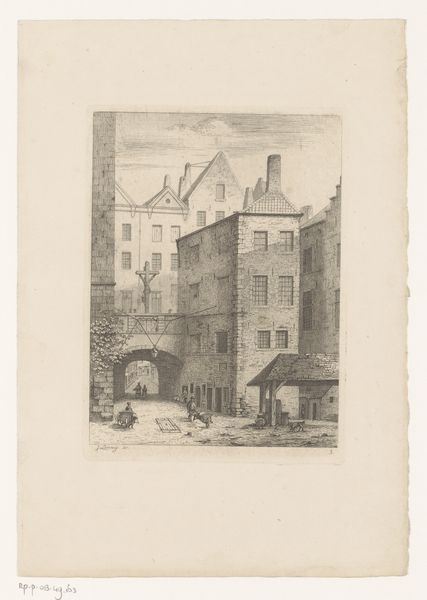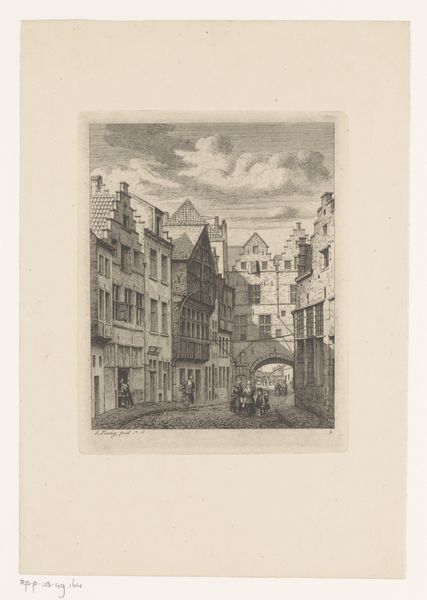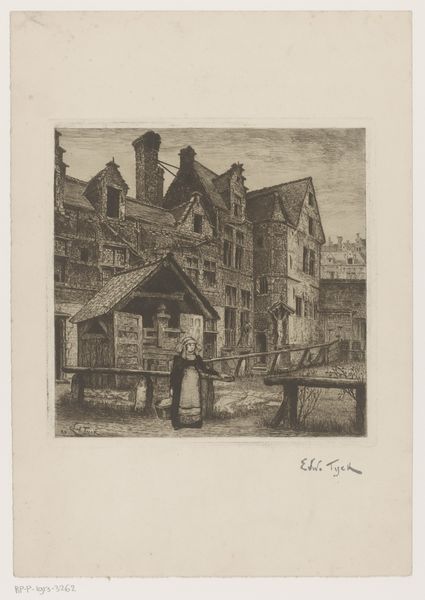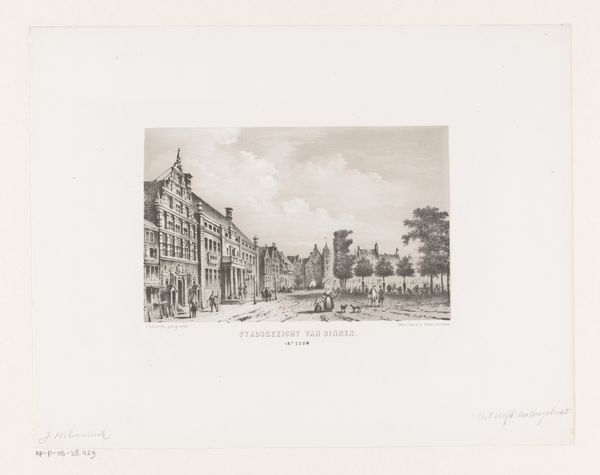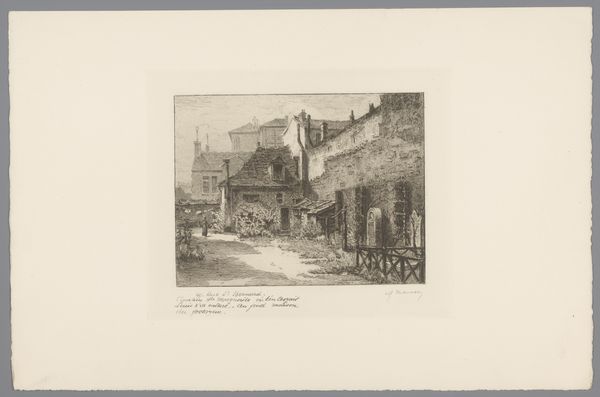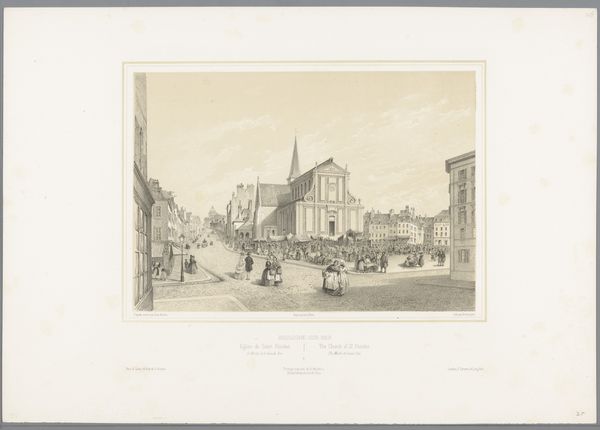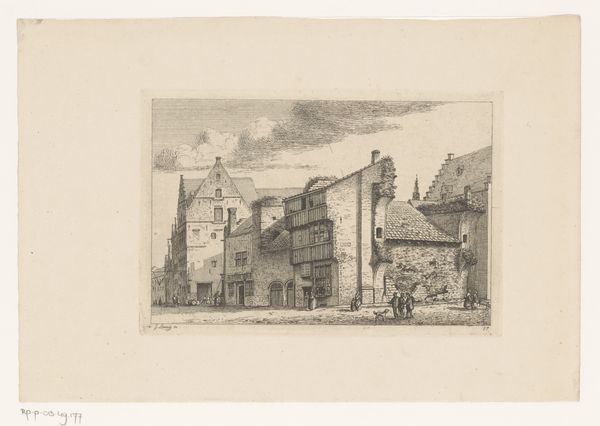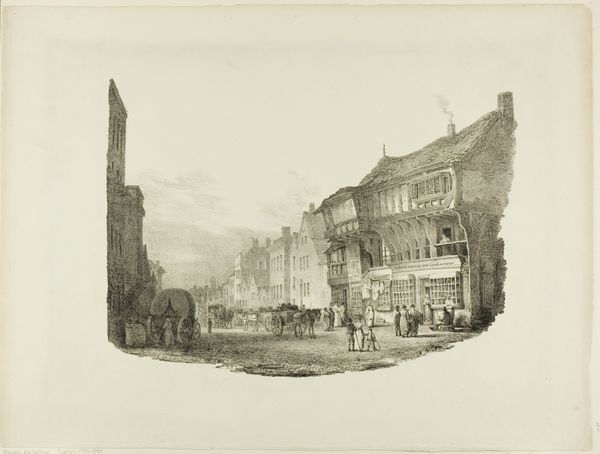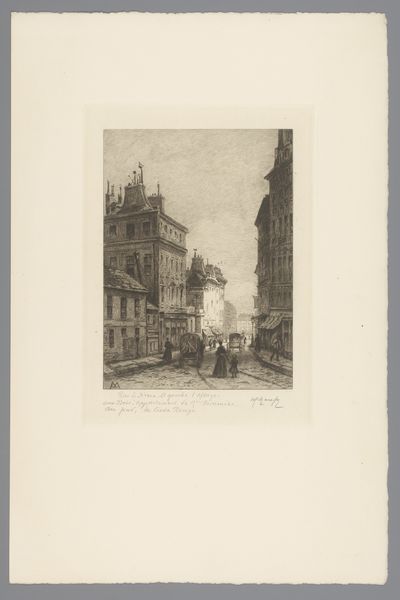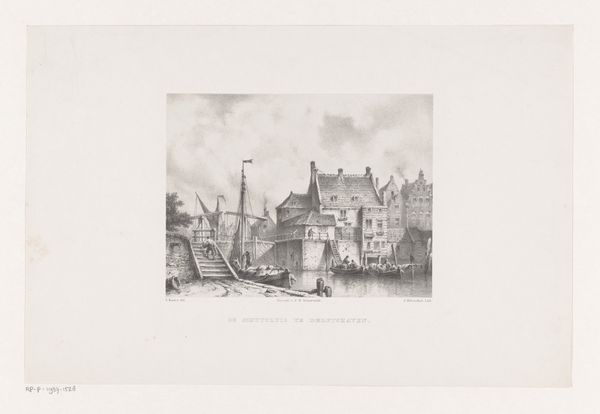
Dimensions: height 219 mm, width 270 mm
Copyright: Rijks Museum: Open Domain
Curator: This print, dating from 1906-1911, offers a view of the Rue du Cherche-Midi in Paris, specifically number 37. Henri Manesse is credited with the work; the materials appear to include ink, paper and photography within an etching process. What's your first impression? Editor: Somber, almost haunting. It feels quiet, a moment captured before the rush of modern Parisian life. The grayscale palette emphasizes the urban architecture's density and seems to reinforce a specific feeling of being suspended in a bygone era. Curator: The textures, particularly the way he renders the stone buildings and cobblestone street, suggest an exploration of the city’s materiality and an understanding of building processes. How do these components resonate in terms of social context? Editor: Think about urban planning at that time. These narrow streets weren't accidental; they concentrated populations, influenced economies, and shaped social interactions. Also consider that Manesse is carefully crafting an artistic representation through etching, a meticulous process itself indicative of value, versus perhaps simply taking photographs. Curator: Absolutely. Etching required skill, a specific artisanal labor. The consumption of art at this time still hinged on valuing hand-made techniques that photography threatened. The photogravure printing of this image offers an interesting overlap too. Editor: Right, which raises critical questions around access. Who are the figures depicted and how would class or gender identity position these characters within that society and affect access to the art object itself? The lack of crowds further highlights how the social narrative might prioritize certain isolated perspectives. Curator: I'm drawn to how he portrays the buildings. Note the linear details, almost mechanical, capturing an unromantic vision of urban infrastructure. What could the process of replicating such urban elements through a very artisanal, material process reveal about the anxieties around industrialisation during this period? Editor: Looking closer at this piece made me consider how easily the city and its narratives leave many people out of the frame. It urges us to explore the absences within representation and consider the voices and histories often omitted from this seemingly objective view. Curator: Yes, thinking about the production value intertwined with its visual presentation reveals interesting dynamics in early twentieth century France. Editor: Precisely! It is through this kind of layered analysis we learn from artwork as we consider history, experience and identity.
Comments
No comments
Be the first to comment and join the conversation on the ultimate creative platform.
